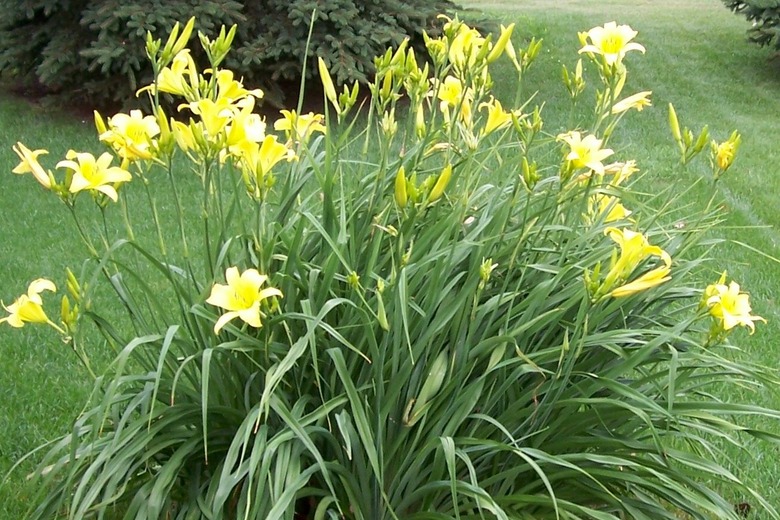How To Prune Daylilies
Things Needed
- Day lilies
- Garden spade or fork
- Sharp knife
- Kitchen shears
- Pruning shears
- Carry basket or garden cart
Tip
Propagate day lilies in the autumn in any growing zone but gardeners in colder climates may find spring divisions more dependable. Many spring-planted hemerocallis will bloom the same season if they are planted early enough. Day lily varieties vary in cultural requirements. Shade-loving varieties that are planted in hot, sunny areas will need more tending than they would if planted according to their preference.
Warning
Don't pull dried leaves until they can be easily tugged free-you can pull young plants out of the ground or damage crowns on older ones. Don't try to "prune" a huge day lily like Kwanso to fit a small space-buy one of the Stella d'Oro "sports" or other smaller varieties to fit the space comfortably.
Pruning day lilies is a misnomer. One may tidy up a day lily but changing its shape or growth habits by cutting off "dead or living parts or branches" would be an exercise in futility. Unlike roses and other herbaceous perennials that we prune, hemerocallis forms a fountain of graceful, grass-like leaves by its own genetics with no outside intervention. There are several maintenance techniques, however, that will help day lilies look fresh and vital throughout the season.
Step 1
Keep up with blooms. Day lily blooms line up on the end of "scapes" where they bloom, one at a time, over a succession of days. Depending on when each scape begins blooming, this period of bloom can last as long as a month. Some day lilies produce second and even third groups of scapes. The challenge is to keep up with the blooms, removing old ones as they fade.
- Pruning day lilies is a misnomer.
- There are several maintenance techniques, however, that will help day lilies look fresh and vital throughout the season.
Step 2
Remove spent scapes. Once all the buds have opened on a scape, it will produce no more. Cut the scape close to its base and remove it. If you are a day lily hobbyist, avoid removing scapes that have formed seed pods and allow the entire scape to dry in place before removing the pod.
Step 3
Pull or cut out dead leaves. Beginning in late summer, many day lilies begin to go dormant. Their long, grass-like leaves will dry out, beginning with the oldest leaves at the bottom around the outside of the mound of foliage. These leaves can be cut out to tidy up the plant. They will pull out easily when the leaf is completely dead. All the leaves should be removed in late fall during garden clean-up to deny local rodents a winter home.
- Once all the buds have opened on a scape, it will produce no more.
- If you are a day lily hobbyist, avoid removing scapes that have formed seed pods and allow the entire scape to dry in place before removing the pod.
Step 4
Divide overgrown specimens. Division is really a form of propagation, not pruning, but it's your only choice for plants that threaten to outgrow their space, particularly aggressive growers like "Kwanso" which can grow as large as 6 feet around with 4 foot tall scapes. Divide clumps with a garden fork or sharp knife.
References
- Daylily Care and Culture
- The American Heritage Dictionary of the English Language; 1969
